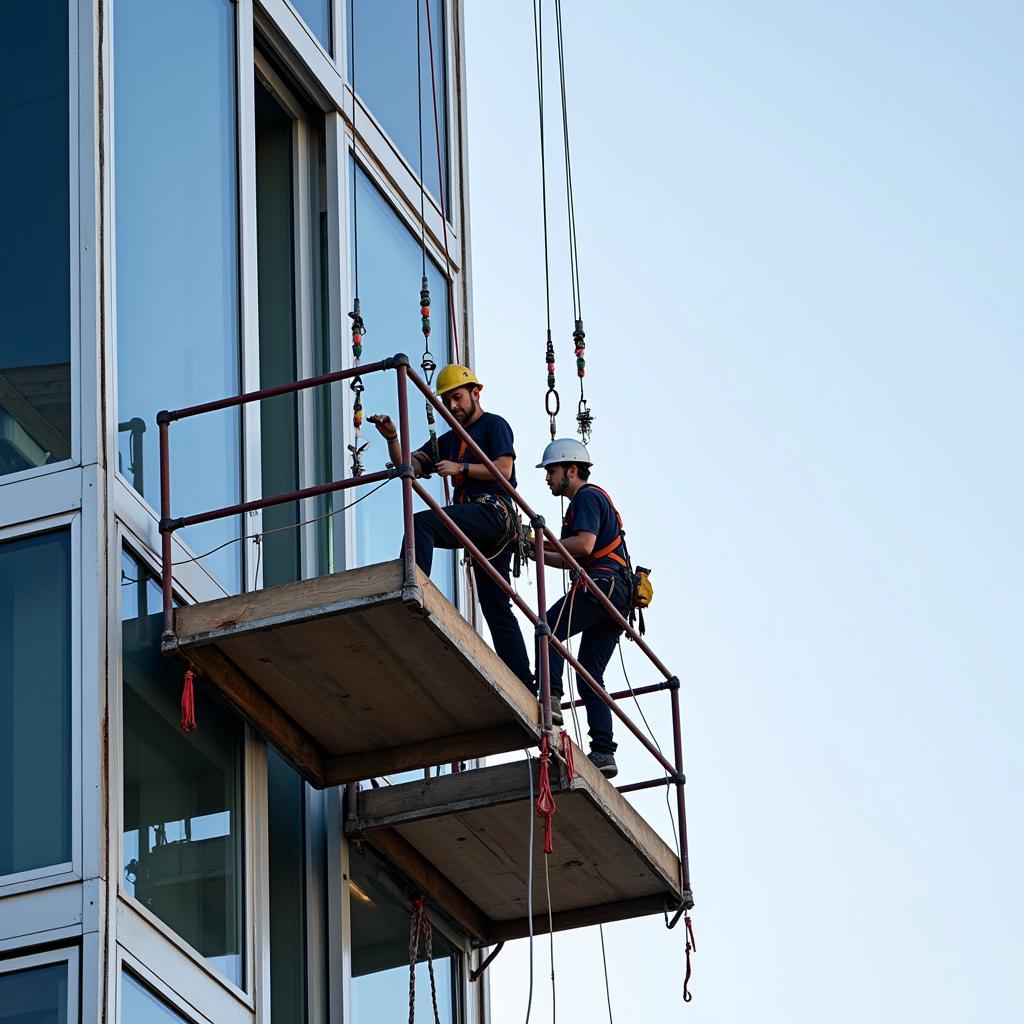Window Washer Scaffolding is a specialized system designed to provide a safe and stable platform for workers to clean windows and perform other maintenance tasks at height. This guide will cover the different types of window washer scaffolding, key safety considerations, and factors to consider when choosing the right system for your needs.
Types of Window Washer Scaffolding
 Suspended scaffolding platform for high-rise window cleaning
Suspended scaffolding platform for high-rise window cleaning
Several types of window washer scaffolding are available, each suited to particular building designs and cleaning requirements:
1. Suspended Scaffolding
Suspended scaffolding is the most common type used for high-rise window cleaning. It consists of a platform suspended by cables or ropes from a support structure on the roof. Hoists and motors control the platform’s movement, allowing workers to access the entire building facade.
Advantages of Suspended Scaffolding:
- Versatility: Adaptable to various building shapes and heights.
- Efficiency: Covers large surface areas quickly.
- Cost-effective: Often a more economical choice for tall buildings.
2. Mast Climbing Work Platforms
These platforms utilize vertical masts or towers temporarily attached to the building. A work platform is raised and lowered along the masts using a motorized system.
Advantages of Mast Climbing Work Platforms:
- Stability: Offers a very stable platform, ideal for tasks requiring heavy equipment.
- Large Load Capacity: Can transport workers, tools, and materials.
- Flexibility: Can be configured to accommodate different building facades.
3. Boom Lifts
Boom lifts, also known as cherry pickers, are aerial work platforms with a platform attached to a hydraulic arm (boom). They offer excellent reach and maneuverability.
Advantages of Boom Lifts:
- Accessibility: Ideal for reaching difficult-to-access areas.
- Speed: Quick setup and repositioning.
- Compactness: Suitable for areas with limited space.
Safety Considerations for Window Washer Scaffolding
Working at height always involves risks, and window washer scaffolding requires strict adherence to safety regulations.
Key Safety Measures:
- Regular Inspections: All scaffolding components must undergo thorough inspections before and after each use.
- Fall Protection: Workers must wear appropriate fall protection equipment, including harnesses and lanyards, securely connected to the scaffolding.
- Weather Monitoring: Work should be halted in adverse weather conditions such as high winds or lightning storms.
- Trained Personnel: Only trained and certified individuals should erect, dismantle, or operate window washer scaffolding.
Choosing the Right Scaffolding System
Selecting the appropriate window washer scaffolding involves considering several factors:
- Building Height and Architecture: The building’s height and design will significantly influence the type of scaffolding suitable.
- Project Requirements: The scope of work, including cleaning frequency and specific tasks, will impact the choice of platform.
- Budget: Different scaffolding systems come with varying costs, so consider the project budget.
- Site Accessibility: The accessibility of the building and surrounding areas will determine the feasibility of specific scaffolding types.
Conclusion
Window washer scaffolding is crucial for maintaining the cleanliness and appearance of high-rise buildings while ensuring worker safety. By understanding the different types available, prioritizing safety measures, and carefully considering project-specific factors, building owners and managers can make informed decisions when choosing the best scaffolding solution for their needs.